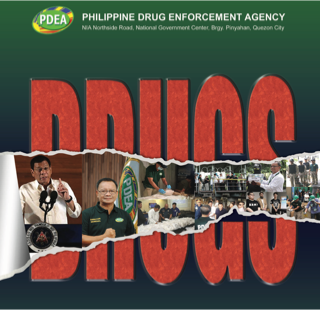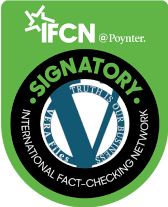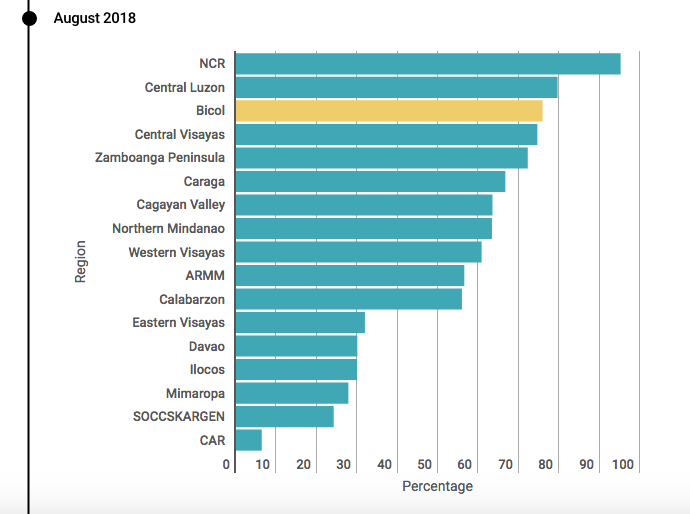Almost three years into the unrelenting war on drugs, the public has been left guessing about the validity of President Rodrigo Duterte’s claims about his centerpiece campaign. One reason: Official data remain either unavailable or too general to draw conclusions.
Duterte has churned out controversial statements on the anti-drug war, the latest tagging Naga City “the hotbed of shabu in the past years.”
Previously, he falsely claimed that Iloilo, whether city or province, was the “most shabulized” in the country; revised his data on drug addicts multiple times; and has repeatedly overestimated the number of law enforcers killed in drug operations.
Under a memorandum he issued on Oct. 10, 2017, Duterte directed the Philippine Drug Enforcement Agency (PDEA) to lead the war on drugs and ordered all information from concerned agencies “relayed, delivered or brought to the attention” of the agency. PDEA, in turn, “renders operational and other significant reports to the Office of the President,” said PDEA spokesperson Derrick Carreon.
PDEA data on arrests, confiscation, seizure and drug-related operations are posted on Real Numbers PH, a website launched May 2017 by the Presidential Communications Operations Office in a bid to stop the spread of “misleading numbers.”
But the information on Real Numbers PH is sparse, consisting of summary national statistics that are not enough for the public to judge claims the president makes about barangays, towns and cities, and even provinces.
The end-of-year reports PDEA publishes also do not go down to the town and city level, more so the barangay. The latest available annual report of PDEA found on its website is for the year 2016.
An FOI (Freedom of Information) request VERA Files filed with PDEA for updated regional and provincial data to fact-check Duterte’s claim about Naga City and other areas drew this response from Carreon:
“Please do remember that we re (sic) dealing with nationwide data thus making the task (validation) very tedious and critical. I am not privy to the length of time that it takes for such tasks. That is entirely up to our Intelligence and Investigation Service.”
PDEA gave VERA Files instead a yearly breakdown from January 2011 to July 2018. In the absence of updated and disaggregated data, journalists and the public alike have no choice but to make do with what PDEA publishes annually and the data it chooses to provide to the media.
Here’s what the PDEA reports say.
Annual reports tag NCR ‘main hub’ of shabu
Each PDEA annual report since 2012 includes a section called “The Philippine Drug Situation,” showing trends in the drug market, data on eradicated marijuana plantations, dismantled shabu laboratories and related arrests, though notably in inconsistent time periods.
PDEA, in its annual reports from 2012 to 2017, never claimed Naga to be the “hotbed of shabu.” However, the 2012 report did say the National Capital Region (NCR) “remains to be main hub in manufacturing shabu in the country.”
The region has since ranked first in terms of the number of dismantled shabu laboratories in 2013, 2015 and 2016. While the 2014 report did not include exact numerical data, it said most dismantled shabu laboratories were in the NCR, as well as in populated areas in Central Luzon.
In the 2017 report, which Carreon provided, PDEA totaled the number of shabu laboratories dismantled since 1997. The NCR was still first with 48, followed by Central Luzon with 22, Calabarzon with 19, then Bicol with six.
Bicol ranked fifth in the number of arrests in relation to dismantled shabu laboratories, with seven, after NCR, 93; Calabarzon, 64; Central Luzon, 49; and Central Visayas, 11.
Zamboanga Peninsula has highest rate of drug-affected barangays in latest publicly available data
PDEA’s December 2017 and January 2018 data on barangay drug-affectation ranked the Zamboanga Peninsula first out of 17 regions, with 1,831 or 96.17 percent of its 1,904 barangays affected by drugs.
A drug-affected barangay means there is a drug pusher, drug personality, manufacturer, drug den, or clandestine laboratory in the area as defined by DDB.
The NCR was a close second with 1,627 or 95.37 percent of its 1,706 barangays affected. This showed a decrease in numbers, which in 2016 was one barangay away from reaching 100 percent affectation, making it the most drug-affected region in the country for that year.
Bicol, the region where Naga City is located, ranked 16th, with 576 or 16.59 percent of its 3,471 barangays affected by drugs.
Caloocan City had highest number of drug-affected barangays in first eight months of 2016
PDEA’s combined drug-affectation list of 81 provinces and 27 cities from January to August 2016 ranked Caloocan City first with 100 percent drug-affectation. Camarines Sur, where Naga City is located, ranked 81st.
Data showed that 181 or only 17 percent of Camarines Sur’s 1,063 barangays were affected by drugs. Davao City ranked 20th, with 78 percent of its barangays affected by drugs.
Sources:
PCOO, President Rodrigo Duterte, Speech during the launch of Go Negosyo’s Pilipinas Angat Lahat program, Aug. 14, 2018.
PCOO, Duterte orders PDEA to lead campaign against illegal drugs, Oct. 11, 2017.
PDEA, 2012 Annual Report, The Philippine Drug Situation
PDEA, 2017 Annual Report, The Philippine Drug Situation, Critical Areas
PDEA, 2013 Annual Report, The Philippine Drug Situation
PDEA, December 2017 and January 2018 Regional Drug-Affectation Data
PDEA, January to August 2016 Provincial Drug-Affectation Data
(Guided by the code of principles of the International Fact-Checking Network at Poynter, VERA Files tracks the false claims, flip-flops, misleading statements of public officials and figures, and debunks them with factual evidence. Find out more about this initiative and our methodology.)




